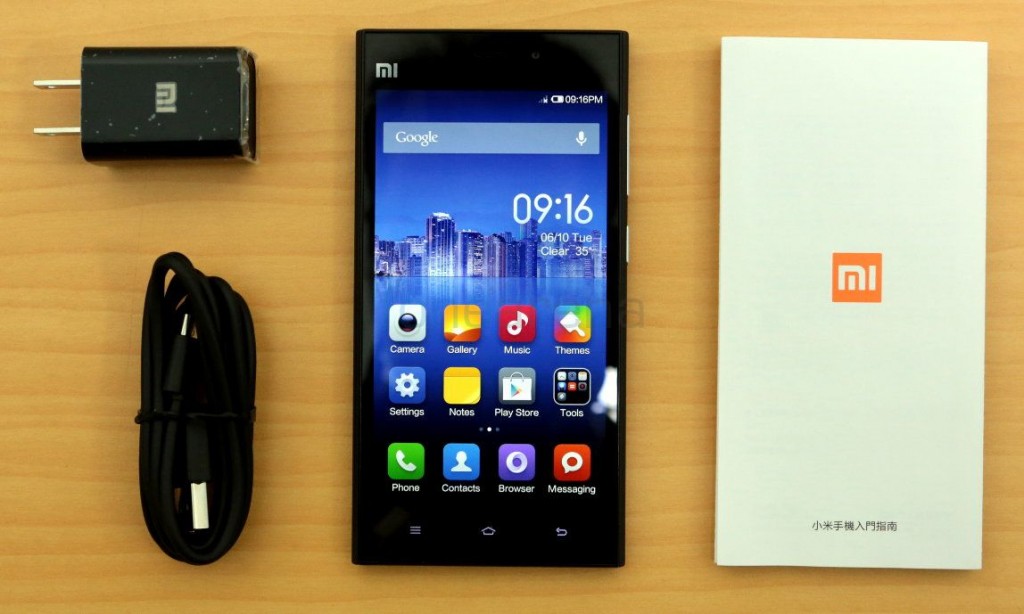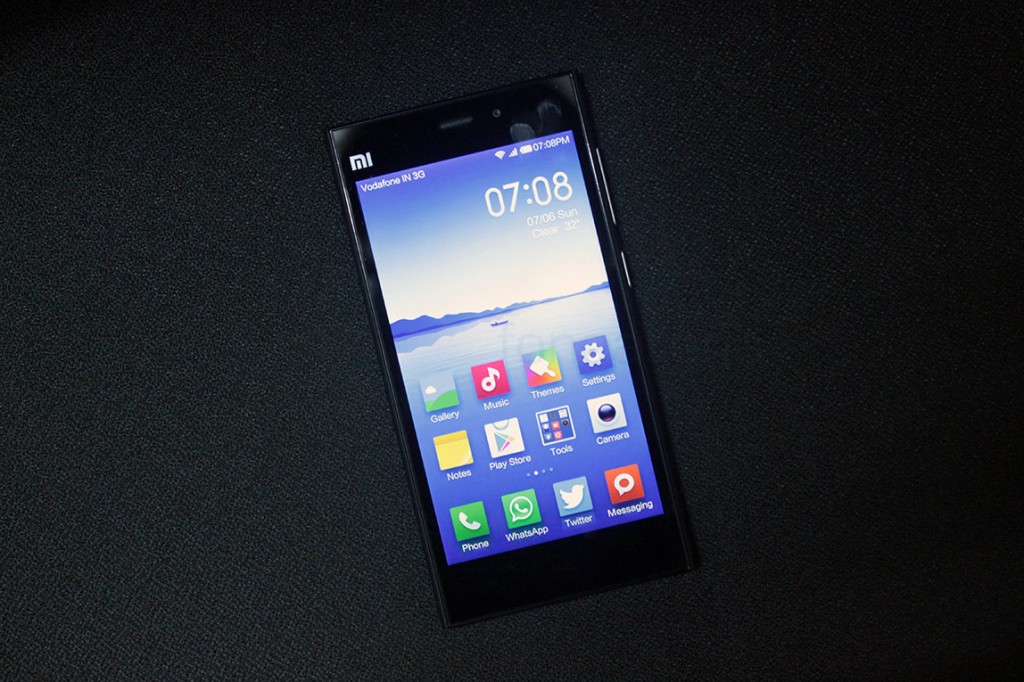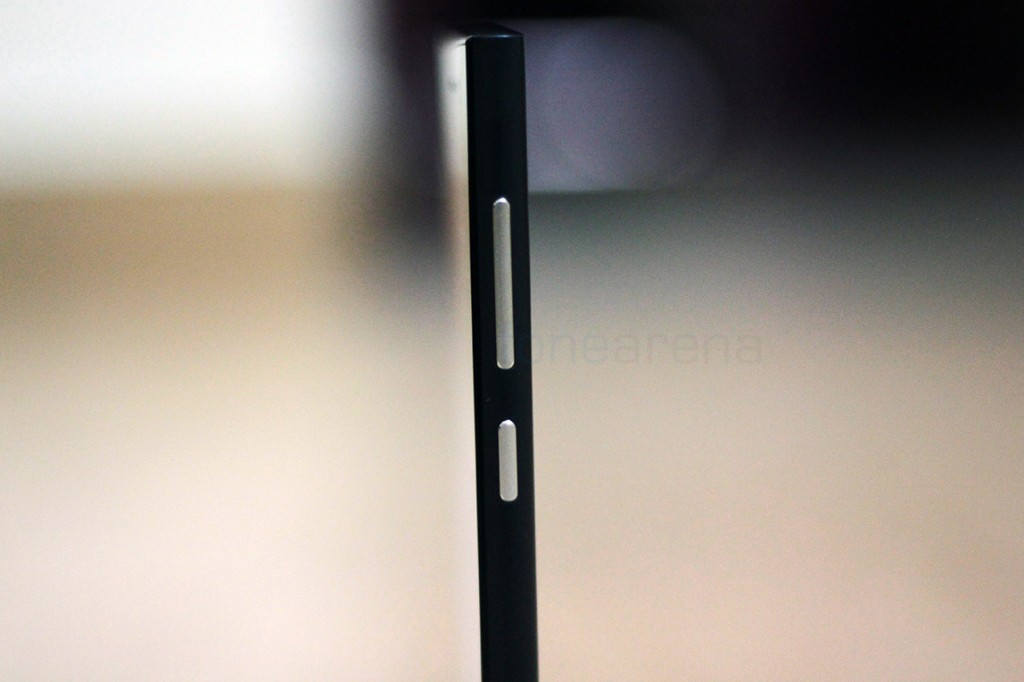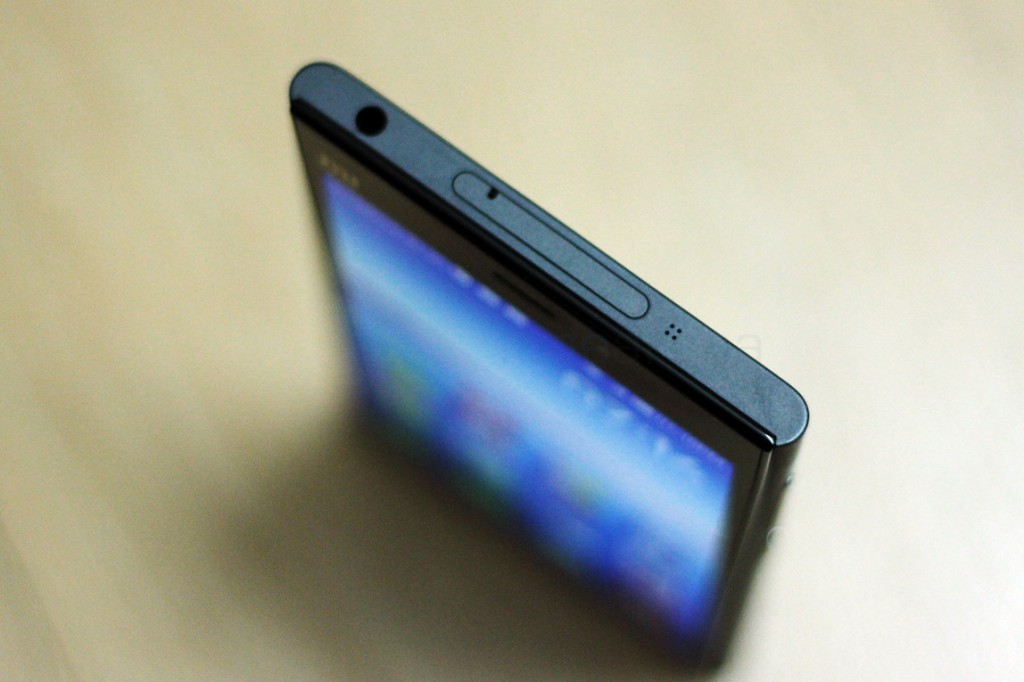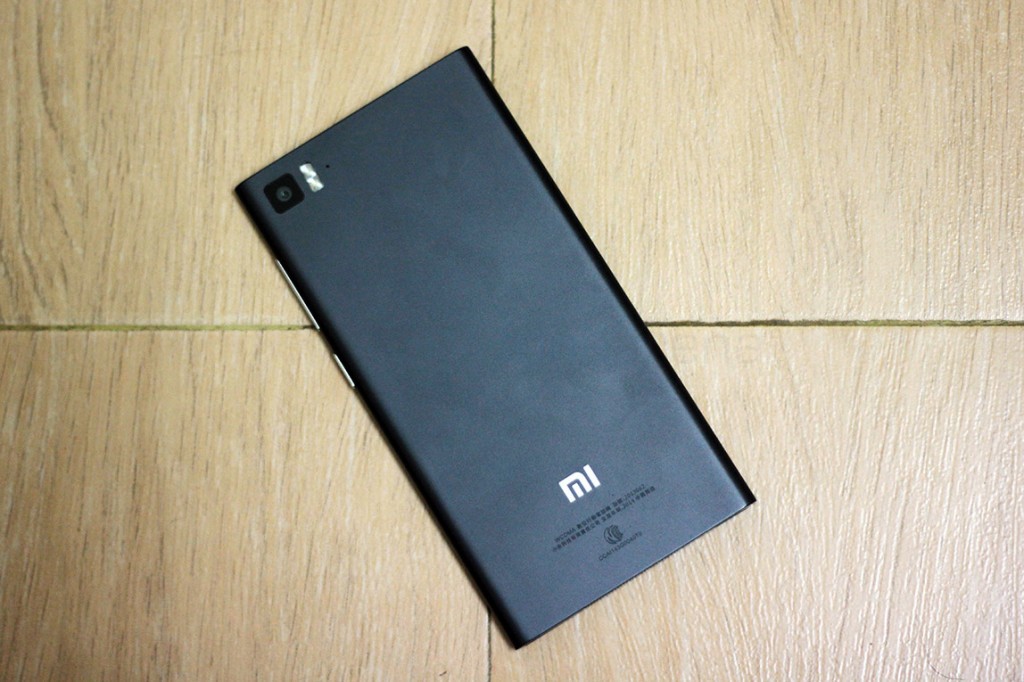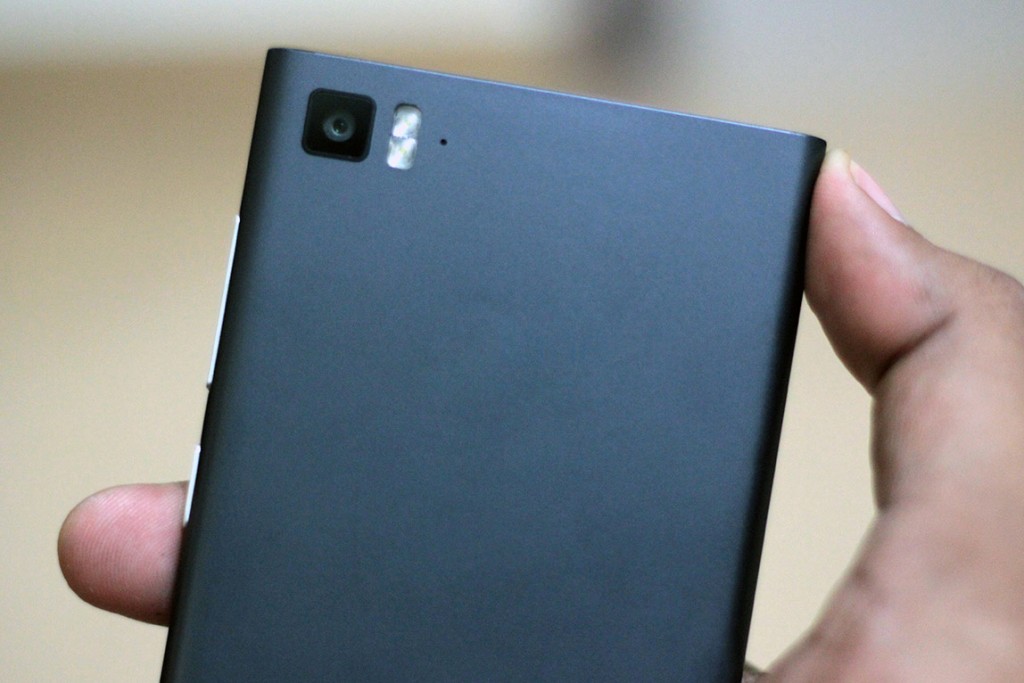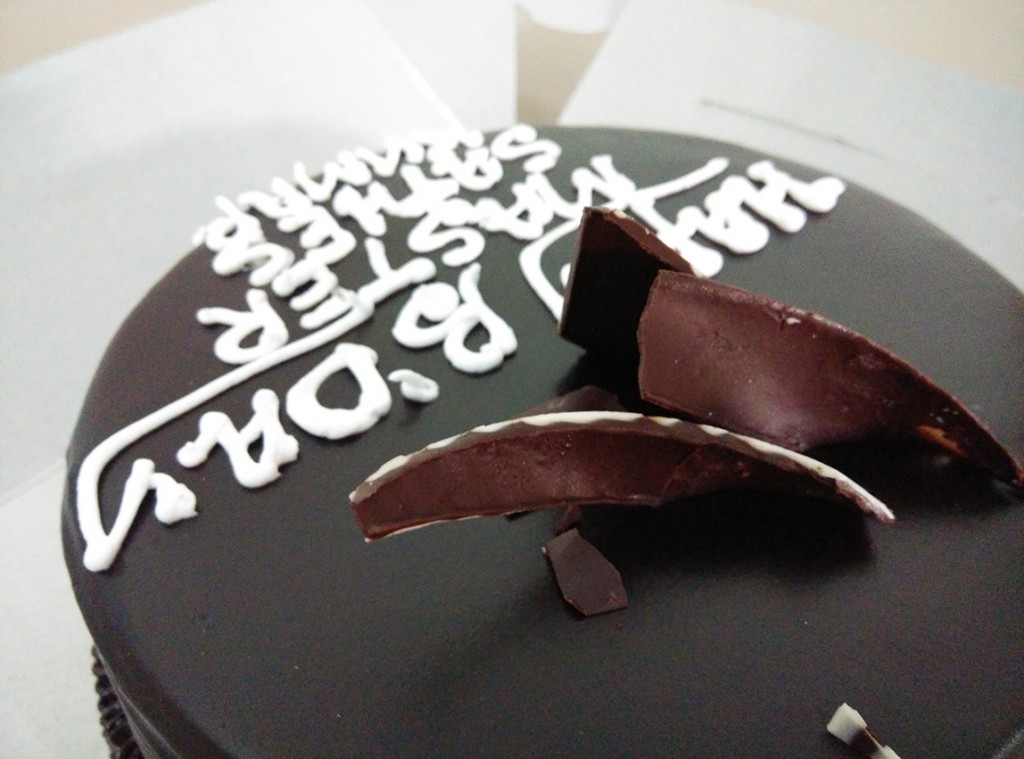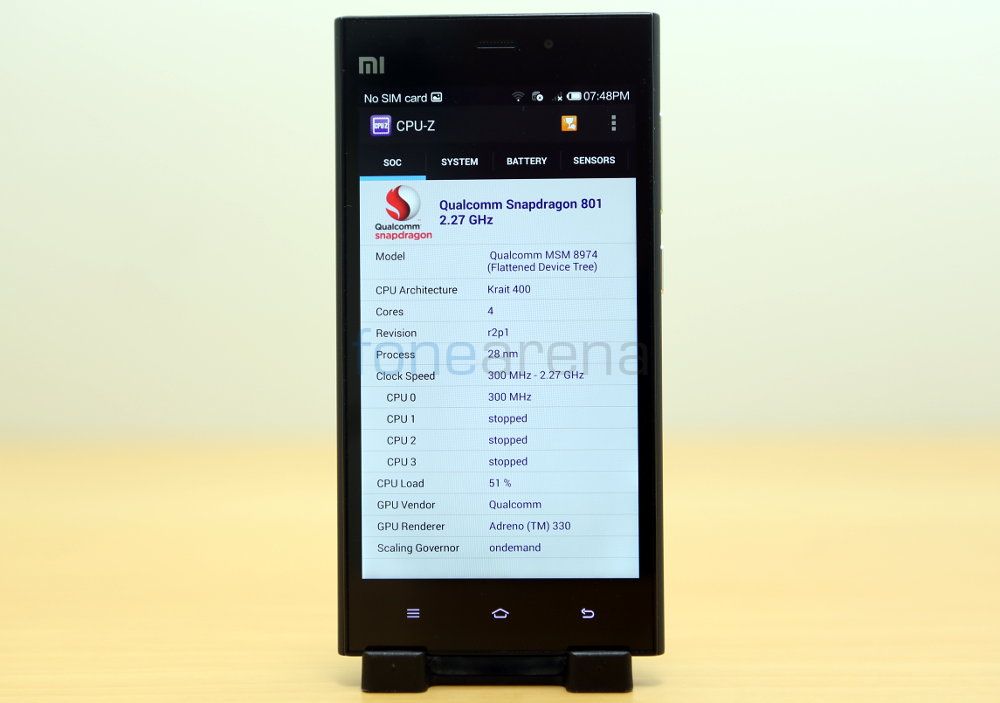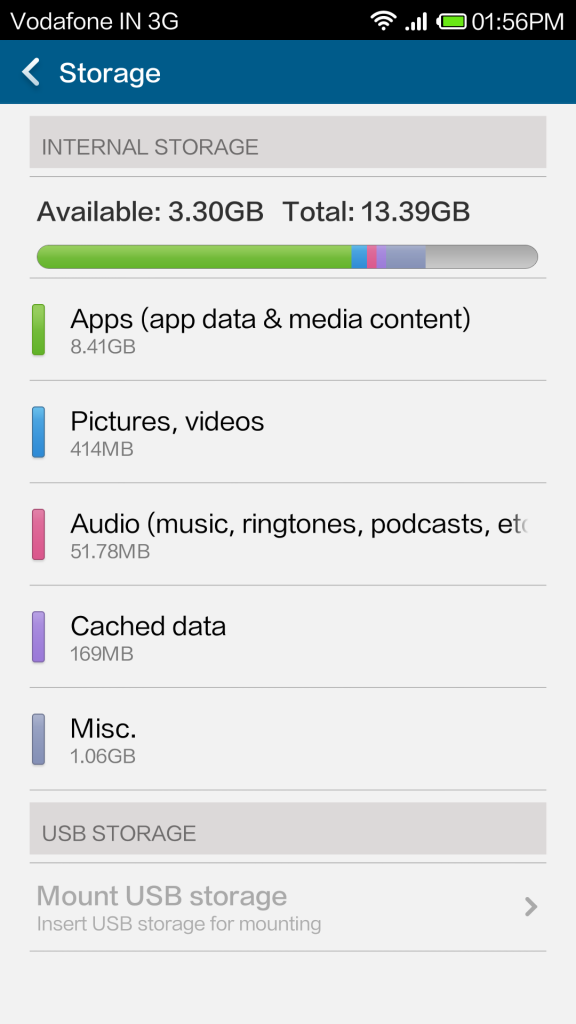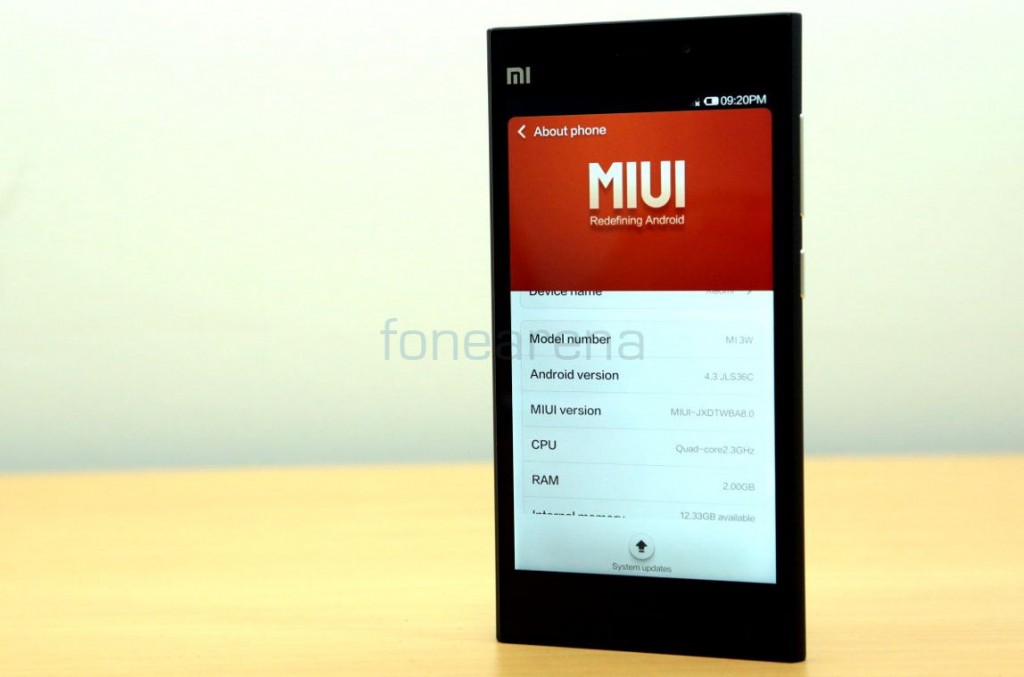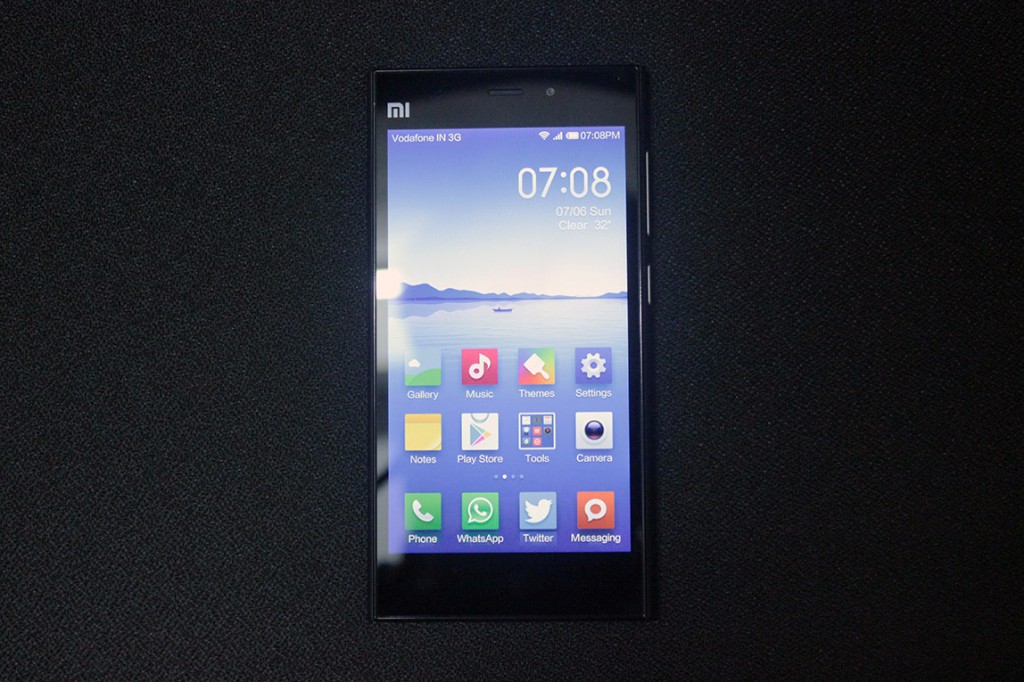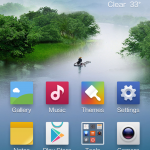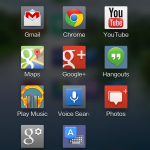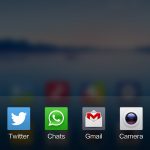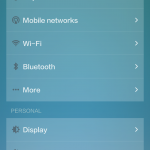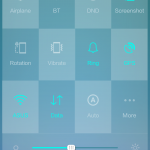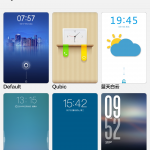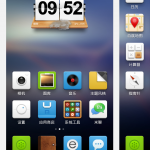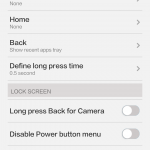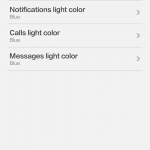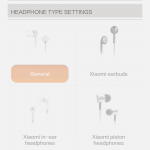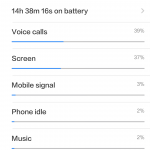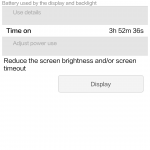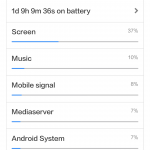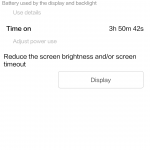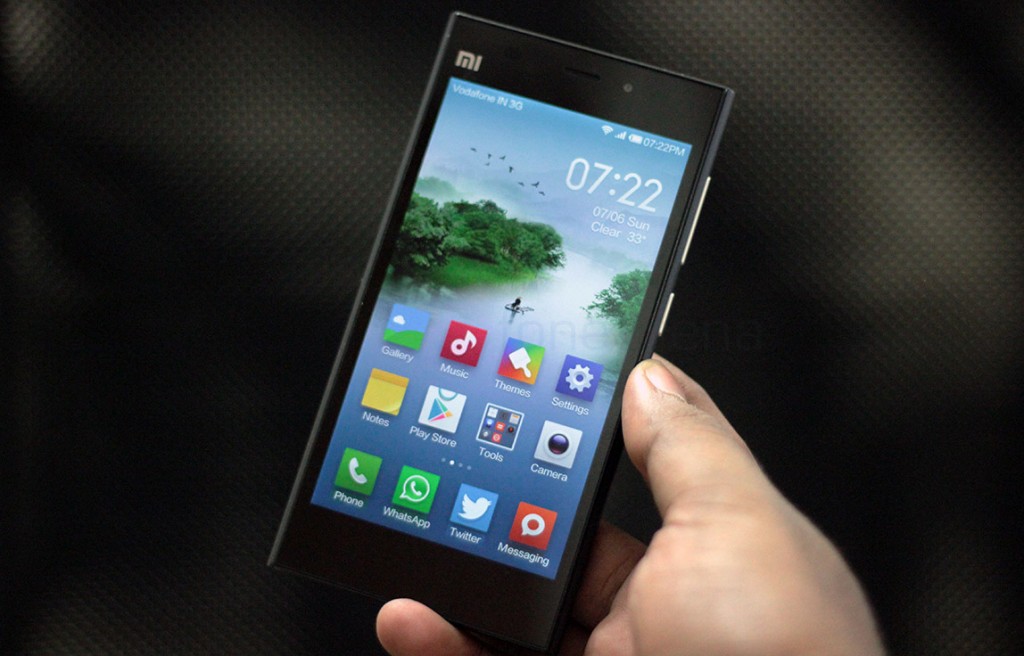Xiaomi made its name in the global scene from its home market, China. The company, initially making its own custom ROMs (MIUI) for Android devices, entered the highly competitive world of hardware with its Mi range of smartphones. After a few iterations, the company unveiled Mi3, Xiaomi’s latest flagship device, packing top end specifications, but at a very low price unmatched by the competition. This is all thanks to Xiaomi’s business model where it sells to its consumers directly, without the overhead of a distribution channel on the price. After hiring Android VP Hugo Barra, the company recently took its operations to other countries like Singapore and Malaysia, where it saw success, and is finally here in India, where its flagship Mi3 will go on sale the 15th of July, at a shockingly low price of Rs. 14,999 (Update: Now Rs. 13,999) Even just by looking at the on-paper specifications, one can say it is already worth it. In fact, it could even be perceived as undervalued, but what about the details, you ask? That’s where our in-depth review can help, read on.
Video Review
httpv://www.youtube.com/watch?v=b3duNKIDsVc
Unboxing
The Mi3 we have with us is the black variant we got from Taiwan, and it comes with the usual set of accessories inside a very neatly packaged box. You can check out the post and the video here, but here are all the box contents you get –
Design, build and ergonomics
The design of the Xiaomi Mi3 is quite apparent if you are a fan of Nokia devices, but even if you aren’t, you’ll know, because it looks like a flatter Nokia N9 without a curved screen. This is easiest way to describe the Mi3’s design, but we think it’s not a bad thing at all. The flat ends of the top and bottom and the curved sides are elements from the Nokia Fabula design language, but without the pillow-y back. Even the speaker holes, which are laser drilled, mirror the N9 look, perhaps slightly more refined. But unlike the N9, with a flat front and back, the device doesn’t really look like a single piece, as the display sits on a slightly elevated frame. This adds a small amount of gloss to an otherwise minimalistic matte phone. The back is where you feel that this is a completely different device as the camera placement and the logo lend some differentiation. The Mi3 might look like the N9, but it has its own differentiation and better attention to detail, like for example, the perfectly machined USB slot.
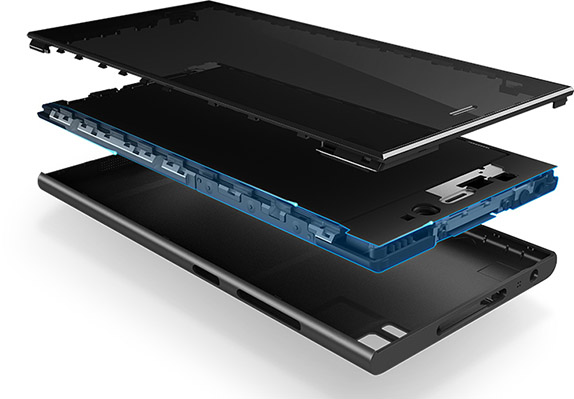
Xiaomi touts the phone’s build quality through the usage of a magnesium-aluminium alloy frame. This is on the inside of the phone, meaning the frame that holds the components together, as on the outside, it’s completely plastic. That doesn’t mean that the plastic is cheap though, but it is surely less dense, especially when you consider how light the overall phone is, mainly thanks to the alloy frame. With the slightly elevated frame, supporting scratch and smudge resistant, on the front, and a single piece of plastic ,housing an alloy frame, for the rest, the phone is built to last and could take hard hits without breaking.
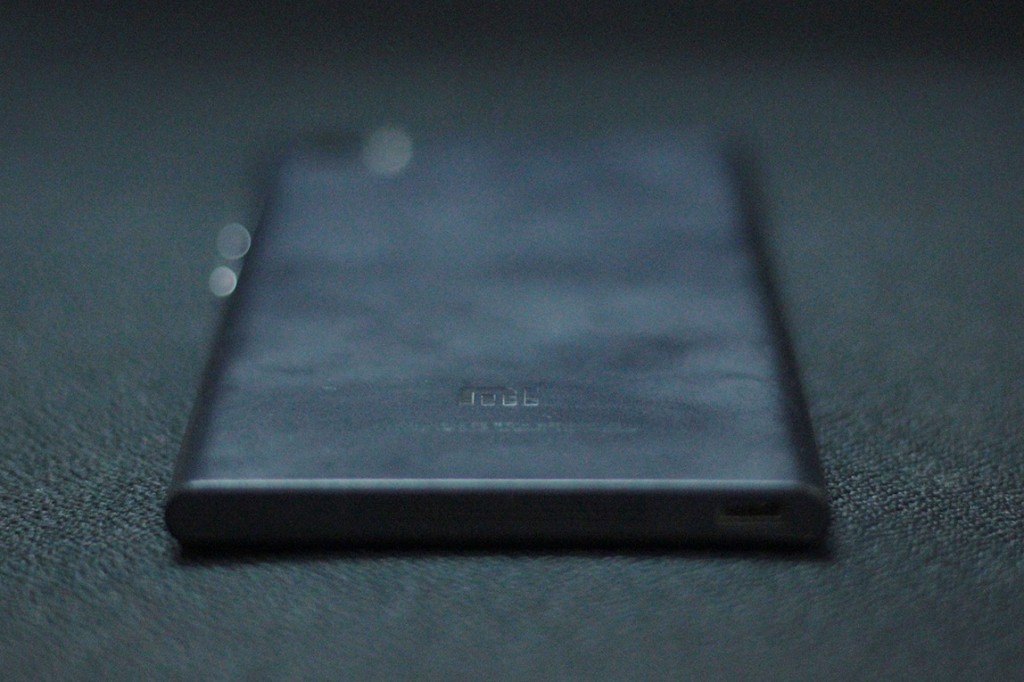
The dimensions of this 5″ phone are very similar to many 5″ phones, especially the ones from Oppo and Sony, as the Mi3 too, is tall. At 144mm, the height of the phone will be a slight annoyance for people with smaller hands, but the 16:9 form factor makes the device narrow enough (73.6mm) for easy operation in a single hand, and the thickness helps too (8.1mm). The plastic material on the sides and the back is smooth, so it is obviously slippery to some extent. Adding to the slip factor is the easily smudged material that requires incessant cleaning sometimes. You might not need a case on the device, but we’d suggest you get one just in case. Weighing a light 145g, the weight distribution of the phone is linear and equal, so you would not want to worry about it toppling over. Let’s take a walkthrough of the hardware now.
Hardware Walkthrough
The Xiaomi Mi3 has a 5″ 1080p display at the front, occupying the major portion of the device, unsurprisingly.
Unlike many Chinese device, the device does have a Mi branding above the display, sitting alongside the ear piece, the 2 MP front facing camera, the usual couple of sensors and a multi-color notification LED. Below the display are the capacitive shortcut keys that light up when pressed and have haptic feedback.
Moving to the sides, we have the volume rocker and the power/lock switch at the right, while the left side is devoid of any controls.
The top houses the 3.5mm audio jack, the mini SIM card slot and the primary microphone for voice calls. The mini SIM card slot should be opened with a tool, and in case you have a micro or a nano SIM card, you need to use an adapter, we did.
Over at the bottom, we have the laser grilled loudspeaker holes and the finely machined micro USB slot.
Moving to the back, we have the 13 megapixel camera unit at the top left, alongside the dual LED flash and the secondary microphone for stereo audio in videos. Down below is the Mi branding again, with regulatory information pointing out that this is a WCDMA version that doesn’t support LTE.
Let’s move on to the finer details then.
Display
The Mi3, as mentioned earlier, has a 5 inch full HD resolution screen of the IPS LCD type. It is closely bonded to the touchscreen, so it is geared to provide better contrast for a LCD with deeper blacks than usual, which is true. But since the UI is mostly white, we don’t see much of a difference anyway. That aside, the PPI count stands at 441 and interestingly, Xiaomi notes that this is a “retina” display manufactured either by Sharp or LG, which is very similar to what Apple says and does. In actual use, the display is great. It has great colours, good brightness with addition control through CABC (content adaptive brightness control) and the viewing angles are very good too. The touchscreen feedback is also notably good, which is possibly due to the coating on the screen.
Overall, the 16:9 display is great for watching movies, playing games and even reading, thanks to the resolution, and it will easily be the only device in its price range to sport such a great screen. The price factor makes the display so much better, we’d say. On the software side of things, the phone comes with a glove mode that can be enabled in the settings, for higher sensitivity and there is even a setting that lets you control the white balance of the screen, like LG devices.
Camera(s)
The Xiaomi Mi3 comes with top end specifications, so the camera had to be at least 13 megapixels, which it is, with a f2.2 aperture lens over it. Flanked by a dual LED flash unit and a secondary microphone, the camera takes pleasing pictures in normal daylight conditions. Powered by the MIUI interface, the camera operation is easy enough for newbies but there are a lot of options for professionals and enthusiasts too, who want to tinker with the settings. For example, one can take a photograph with light trails thanks to the manual shutter speed control, and for the adventurous, there is even custom controls for white balance in K values and manual ISO upto 3200. We showed off the interface along with thoughts about the performance in the camera review video that we did earlier, take a look –
httpv://www.youtube.com/watch?v=C86Ss_lmdoA
Note: There is RAW functionality only of the TD-SCDMA version of the Mi3, but what we have here and what will launch in India, is only the WCDMA version.
As you could see from the video, our verdict was that the Mi3 was certainly above average when it came to a flagship device, but certainly not the best. But after the announcement of the phone’s pricing, we want to say that this is easily the best camera phone you can get for the price. At Rs. 14,999, the camera has way too many features and good performance for the price it comes at. But again, you can be a better judge by taking a look at our full resolution samples here –
Daylight
Right from the first image, we can see that the image quality is actually pretty decent, but the camera struggles with exposing the frame correctly, as evidenced by the last picture. Also, when it comes to actual detail at 100%, we are not entirely impressed with the slightly softened image, partly due to aggressive post processing, but if one thing that stands out, that will be the white balance, which is perfect on all the pictures. To see if HDR mode helps the lack in proper exposure, we tried it out –
HDR Samples
Without HDR
With HDR
As you can see, there are minor differences in exposure in the separate HDR mode, but the problem is that it does not even out the picture, but rather only brightens up the shadowy parts, a little bit. The colours are boosted too, which leads us to believe that the HDR mode is not really a drastic improvement over the normal mode.
Macro samples
With a f2.2 aperture, one would expect some really good bokehs and detail from the Mi3, but it turned out otherwise –
As you can see from the samples, the macro performance, especially in tough lighting conditions is just average. It’s very hard to catch on to a focus in macro, but with manual settings, one can take a better image. But then again, we note here that the colours are spot on.
Low light
The actual scenes above were actually much brighter than how it looks in these photos, meaning the Mi3 kinda struggles with these conditions. The colour is still spot on but we think the sensor is too small to take in enough light, and we think Xiaomi can really improve their game here. But hey, there are manual exposure settings that let you set 2 seconds of shutter speed, so better low light pictures are indeed possible.
Video
The Mi3 records 1080p videos at 30 fps and also has a weird slow-mo mode that just speeds up things. You can take a look at the weird slo-mo mode on our camera review video, but here is the 1080p sample –
httpv://www.youtube.com/watch?v=Ttku2wZJegM
The video quality is fairly above average we’d say, and it mirrors the stills mode in colour accuracy and exposure, so we think it’s pretty decent. Lastly, the front facing camera is also capable of recording 1080p videos and it’s really decent, as you could see from the camera review above.
Internals and Performance
When the Xiaomi Mi3 launched, it had two variants, one with a Tegra chipset and one with a Snapdragon chipset. The latter was used for 3G markets other than China, which is predominantly a TD-SCDMA market, so what we have here with us, bought from Taiwan, is the Snapdragon based WCDMA variant. Yes, this phone runs on the mighty Snapdragon 800 chipset, the 8274AB model that comes without 4G LTE. Touch luck if you are looking for a cheap LTE phone, but the Mi3, especially at its price, has the best performance, period. It has a 2.3 GHz Quad Core Krait processor with Adreno 330 handling the gaming duties and any other graphically intensive ones. With 2GB of RAM, there is enough memory to handle many apps simultaneously running in the background, and if Snapdragon 800 has been any indication before, it is blazing fast for literally everything you do on the phone.
Update: About 1290MB of RAM is free with default apps running in the background.
It’s better to compare it with the other flagships in synthetic benchmarks than to talk about its performance, so here you go, a couple of test results stacked against the other popular devices –


We also tested out some high end games to see how the device fares in this department, so here is a gaming review of the Xiaomi Mi3 –
httpv://www.youtube.com/watch?v=4mImsfoifzM
httpv://www.youtube.com/watch?v=fY-X13hBODE
As you can see, clearly, the performance of the phone is class leading at this price. The general day-to-day performance too is as fast as the benchmarks portray them to be, and we had no problems with lag or stutter due to less RAM or anything.
Storage wise, the Mi3 we have is the 16 GB variant, which comes with 13.39 GB of available space for system, which then takes a couple of GBs for the OS, giving us around 11 GB for apps and media. Since the phone doesn’t come with an external SD card slot, it might not be enough for people who are used to carrying a lot of media on their devices, but we are hoping that Xiaomi introduces the 64 GB version some time later. For others though, who were ok with the Moto G’s lack of an expansion slot on its 16 GB model, this device will be even better, as it offers a much better package in hardware. Also, you can note that “mount USB storage” option allows you to connect storage devices over USB OTG, which works as expansion. To explain this further, here’s a video –
httpv://www.youtube.com/watch?v=B17n6CDZLh0
Connectivity
The Mi3 is a single SIM WCDMA phone and, as mentioned earlier, it doesn’t support LTE. The SIM card slot too is a mini SIM slot, which means you have to use an adapter if you own a micro or a nano SIM card. We used our micro SIM card with a mini SIM adapter and it worked just fine, so we are sure it will work for you too, but the best option, if you plan to change to this phone completely is get a replacement card from your operator. Usual suspects like WiFi, NFC and FM Radio are present on this device, alongside Bluetooth 4.0, and the device supports quad band 3G and 2G frequencies. While we couldn’t get the PS3 controller to work, the phone does support USB OTG for storage, as mentioned above.
Software
Xiaomi used to be a software company, initially, making its own custom ROMs called the “MIUI” for many Android devices. Right now, the company is doing the same, but the software exclusively runs on its own devices, including the Mi3. The phone comes with the latest version of MIUI, which has reached version 5 and runs atop Android 4.3 Jellybean. The philosophy of MIUI is simplicity, and hence it takes a lot of inspiration from the iPhone. In the earlier days, it used to look a lot like iOS, and even now, the similarities are uncanny, but a lot has changed. Consider it to be like an Android skin that looks pre-iOS 7 but with many good features.
The MIUI has a lockscreen and a homescreen, but that’s about it. There’s no app list or any other screen that takes your attention away, but of course there is a notification draw full of toggles that offer a lot of settings, a touch away. The usual features aside, the best thing about MIUI is its performance and personalization. Unlike other heavy skins, MIUI is really light and is zippy fast on the Mi3. It doesn’t slow down at all, even when running many apps in the background, and that is a commendable thing. And there are even nice little flourishes like a “swipe-up” action on some icons reveals a fancy widget that’s overlaid on the screen. From what we have seen, it works with the Notes and the Music player apps, but we’d wished to see more.
When it comes to personalization, there are tons and tons of options, like one can change the complete look of the device using custom lockscreens, icons and UI elements using the in-built themes app. Xiaomi offers a whole lot of official and user-created options that can be download from the internet, but all you need is a Mi account. The ability to completely change the look and feel is something special, and keeps the user engaged with the interface over longer periods of time, which is much needed for a simple UI, we’d say. But the personalization doesn’t stop with just the look, you can even change how the capacitive shortcuts work, like for example, you can assign long press options for each key and make it your own, this proves to be very useful, and there are even options to assign or change buttons on your headphones. This level of customization really shows how flexible MIUI is, and add to that the usual Android specific options, you get a robust operating system as a whole. And of course, you always have the option to change the launcher to a stock one.
Coming to apps, the MIUI comes with a lot of beautifully designed default ones, with a lot of skueuomorphism thrown in. There are apps for utilities like torch, sound recorder, FM radio and more, all delightfully designed, if you like the pre-iOS 7 fake realistic UIs. The music player looks minimal and doesn’t give us a lot of options, but it does have a decent equalizer and MiSound options if you use specific earphones, especially Xiaomi’s own. The default media apps can view images in a nice and fast way, and can play 1080p videos too, without any trouble. We must also add that the audio performance on this device is great, with good amount of options for the both, in hardware through dedicated ISPs as well as software through equalizers. And finally, there is also the MiCloud, which provides cloud backup for the usual things and also tracks and protects your phone. Pre-installed third party apps include Line messenger, Touchpal keyboard and WPS office. The default keyboard though, is Google keyboard, which works great. And worry not, all the Google apps and services work on the Xiaomi Mi3 out of the box, only the Chinese variant doesn’t have these.
Battery Life
Armed with a 3050 mAH battery, the Mi3 provides longstanding battery life, with additional power settings and options to make it even better. We have been using the device for more than a week’s time now and have been consistently getting good battery life throughout. it easily lasts for a day or more, even under heavy use. For example, on a heavy duty day with calls for nearly 2 hours, the device lasted 14 hours, with the screen remaining on for approximately 4 hours. The other day which was mostly music playback and the usual Twitter and Whatsapp usage on Wifi, the device lasted for more than a day and 8 hours, with 10% battery to spare. This was all set in the high performance mode, which means that we could’ve gotten even more out of it in the other modes. There is no automatic setting for power saver though, so you have to manually turn it on, but most of the times, you wouldn’t need it. Overall, the battery life is stellar on the Xiaomi Mi3, by today’s standards.
Conclusion
The Xiaomi Mi3, priced at Rs. 13,999 for the Indian market, is a game changer. The device packs not only top end specifications, but also completes the user experience by proving to be comparable with other flagships, but at a fraction of their prices. The display, the performance, the build quality, the battery life and even just the design, is class leading for a product of this kind. The camera might not be the best, if you think of it as a flagship, but class leading, at this price. If you ask us, we have no complaints except for the non-information of the kind of after sales support the company can provide, at the moment. Also, the unique business model that Xiaomi might try to replicate here in India, might mean that the stocks will run out real soon. We’ll let you know about the aspects of support, if we get to find out from the company, but if you don’t care for that, aim your F5 buttons on Xiaomi’s India page for the July 15th launch and fire away.
A few important links, added after the review for more clarity –
The new price is Rs. 13,999, launch details here
Xiaomi will have service centers in India


